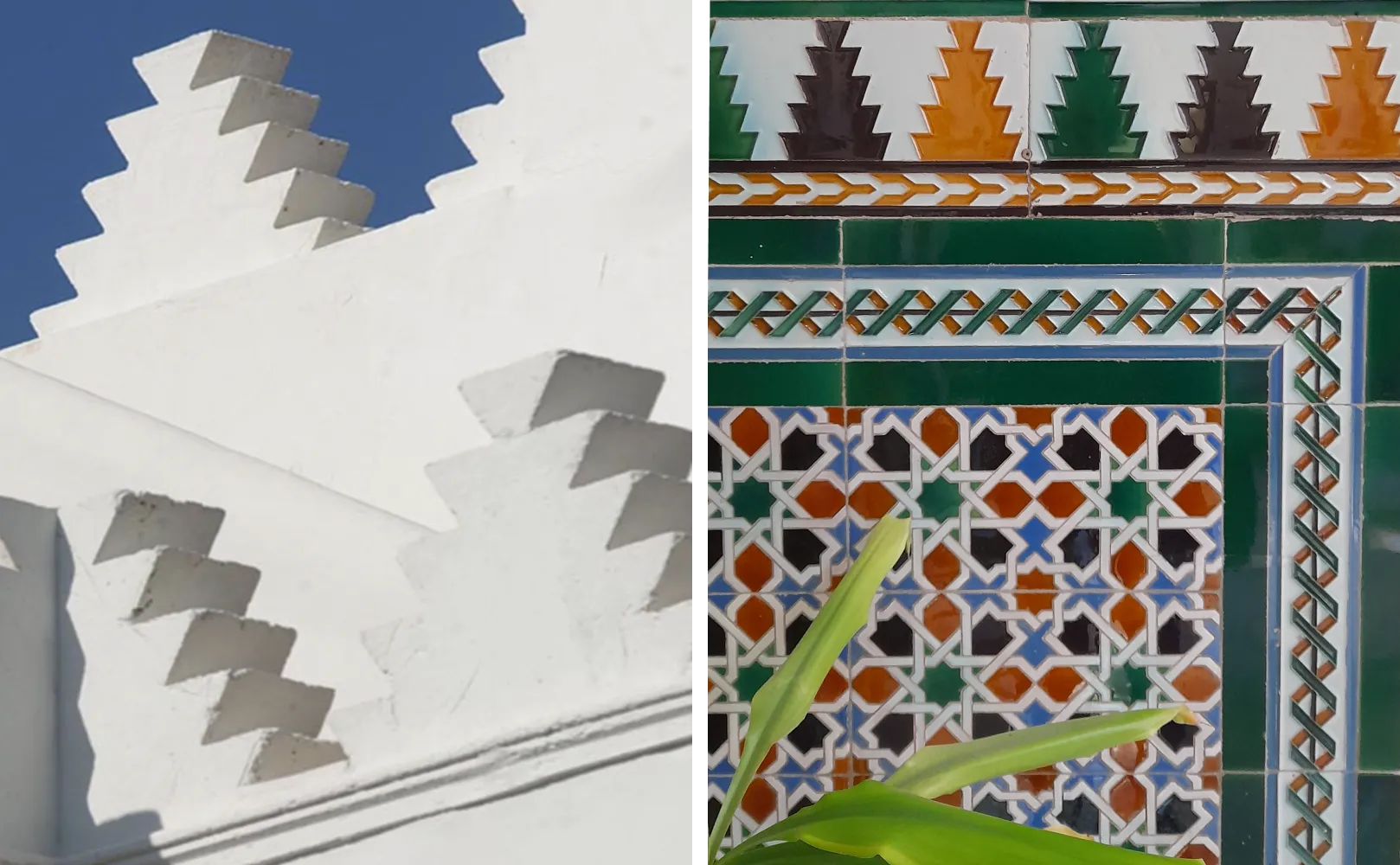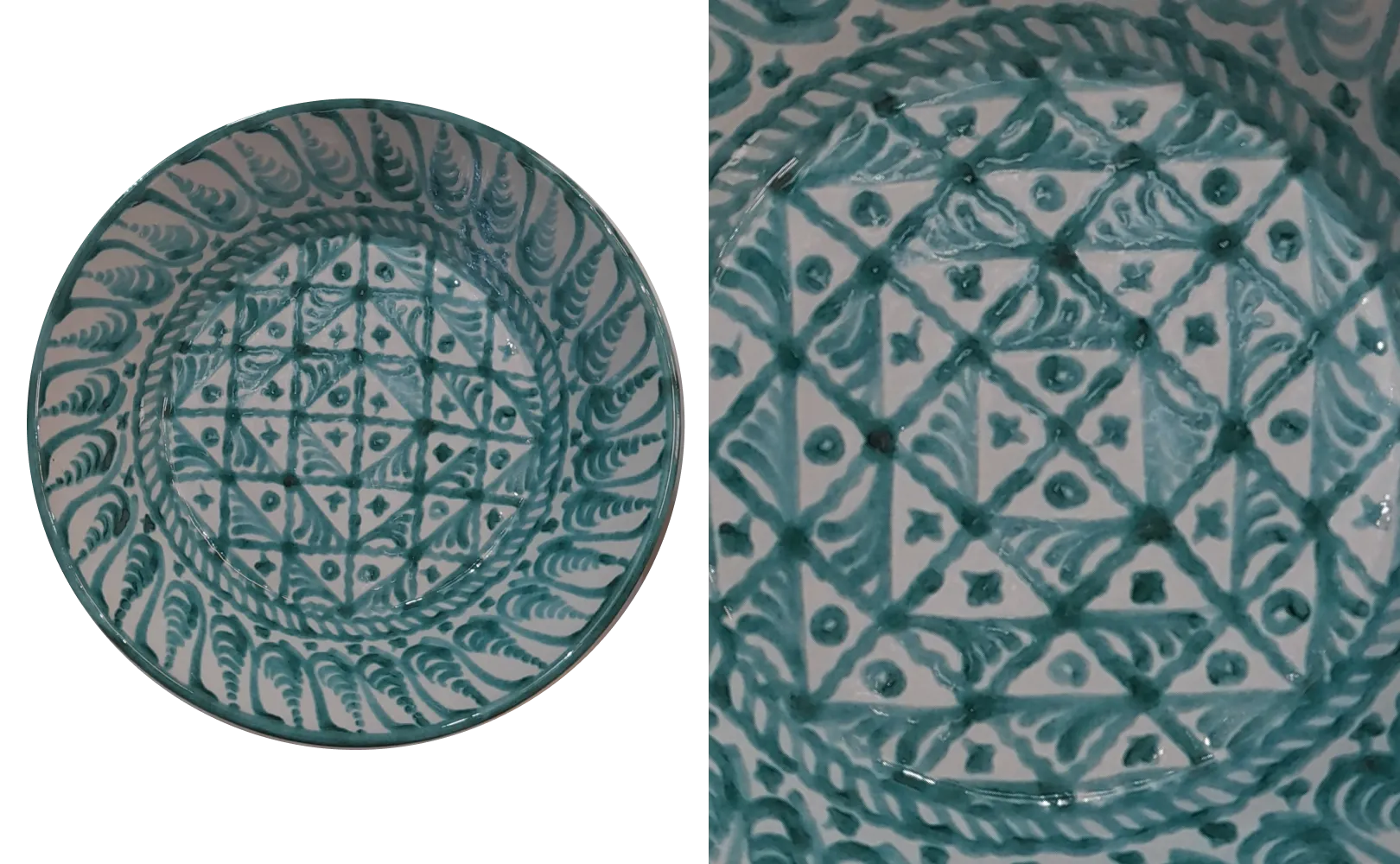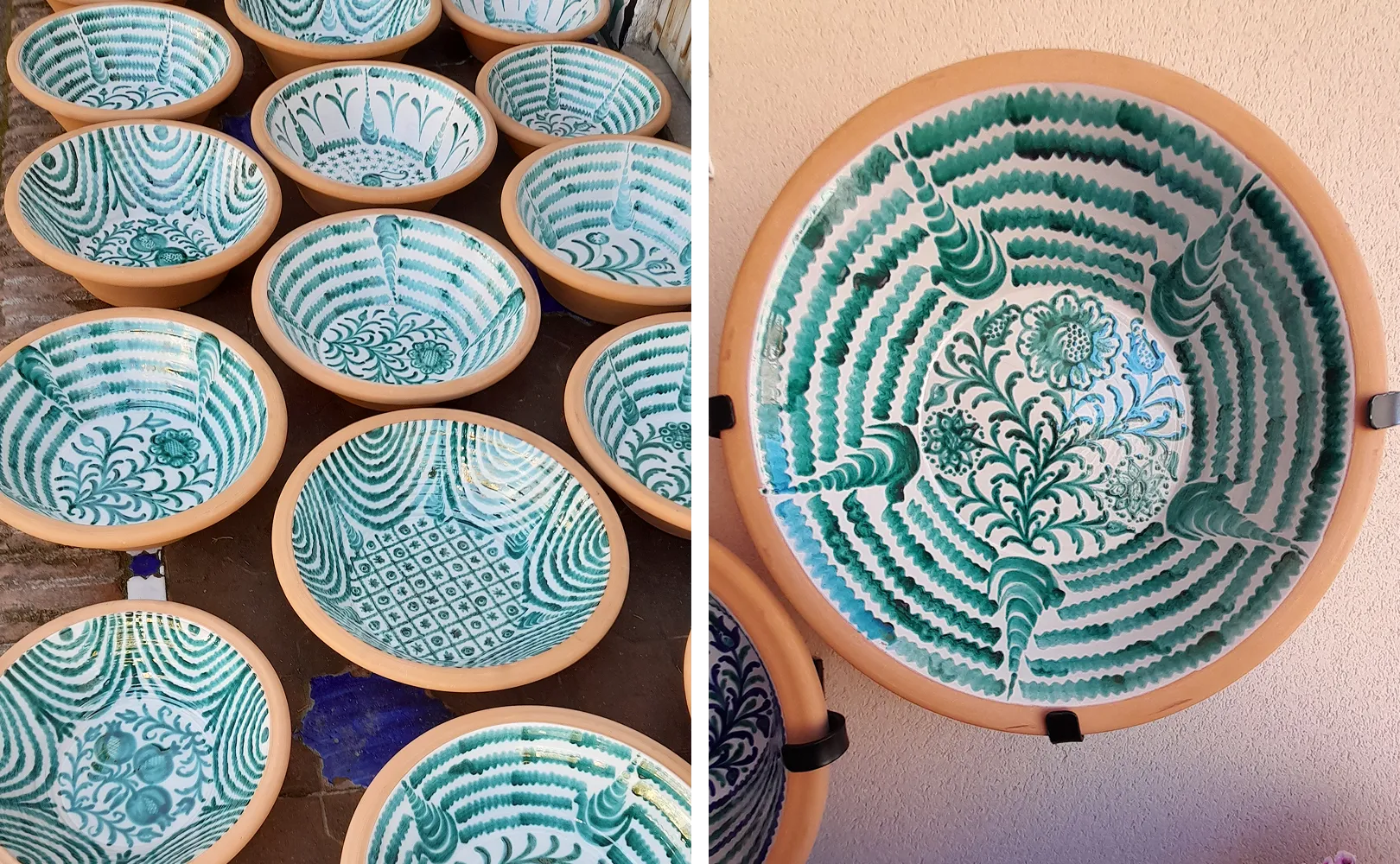
Helmed by the Egyptian architect Hassan Fathy, Sa Bassa Blanca, this home turned museum in Alcúdia has a distinctly pan-Arab flair. The pineapple-shaped structures that line the roof of the building immediately bring to mind a type of azulejo tile used throughout buildings in southern Spain. We can find that particular shape in the Alhambra in the Hall of the Two Sisters and the Room of the Boat, thus named in Spanish for its domed roof that looks like an upside down boat. Perhaps a more elegant title would be the “Room of Blessings” given that the word al-baraka, blessing in Arabic, is inscribed in the stucco throughout the hall.
We also find this distinct geometric pattern in courtyards where it is often used to create the top frieze above more complex mosaics.
A 15th century Moorish ceiling
In keeping with the Moorish influence of the home, the owners installed a 15th artesando ceiling from Zaragoza that has been declared “cultural heritage of the Balearic Islands.” Made of superimposed and interwoven wooden laths (artesonados), these ornate Moorish structures are rare and precious. They require precise mathematical calculations so that every slat slides into place. Few master artisans continue to ply the trade today.
Our Artesonado lebrillo-style bowl is an homage to this Moorish architectural wonder.

Given his provenance we can guess that Fathy was intimately familiar with mashrabiya screens that we can see in the images above. Dubbed celosías in Spanish, these latticed window screens abound in southern Spanish architecture where the Arab influence is evident. Besides their geometric beauty, the celosía protected a cornerstone of Andalusí life: privacy. These screened windows allow you to see the outside world quite clearly but those without cannot see you.
Traditional Lebrillos in the Kitchen
But of course the room we loved best is the hearth of the home, the kitchen with its terracotta tiles of varying shades, a slab of rough stone for a sink and lebrillo bowls. Though these Granada lebrillos travelled across the sea to Mallorca, they are at home here among the eclectic mix.
Sa Bassa Blanca served as the owners´ primary home until the 1990s so we can imagine that this sprawling kitchen was fully functional. Wooden cutting boards and smaller ceramic bowls fill the space.

The artist-curator couple have turned this home into a museum, a testament to Fathy’s work and his only project in Europe. The museum also showcases a variety of modern artists, notably from the oft-neglected African continent.
We have 30+ lebrillo designs available ranging in size from 35cm to 80cm. If you need a custom fit or color, do let us know. We also offer custom-made wall mounts.

